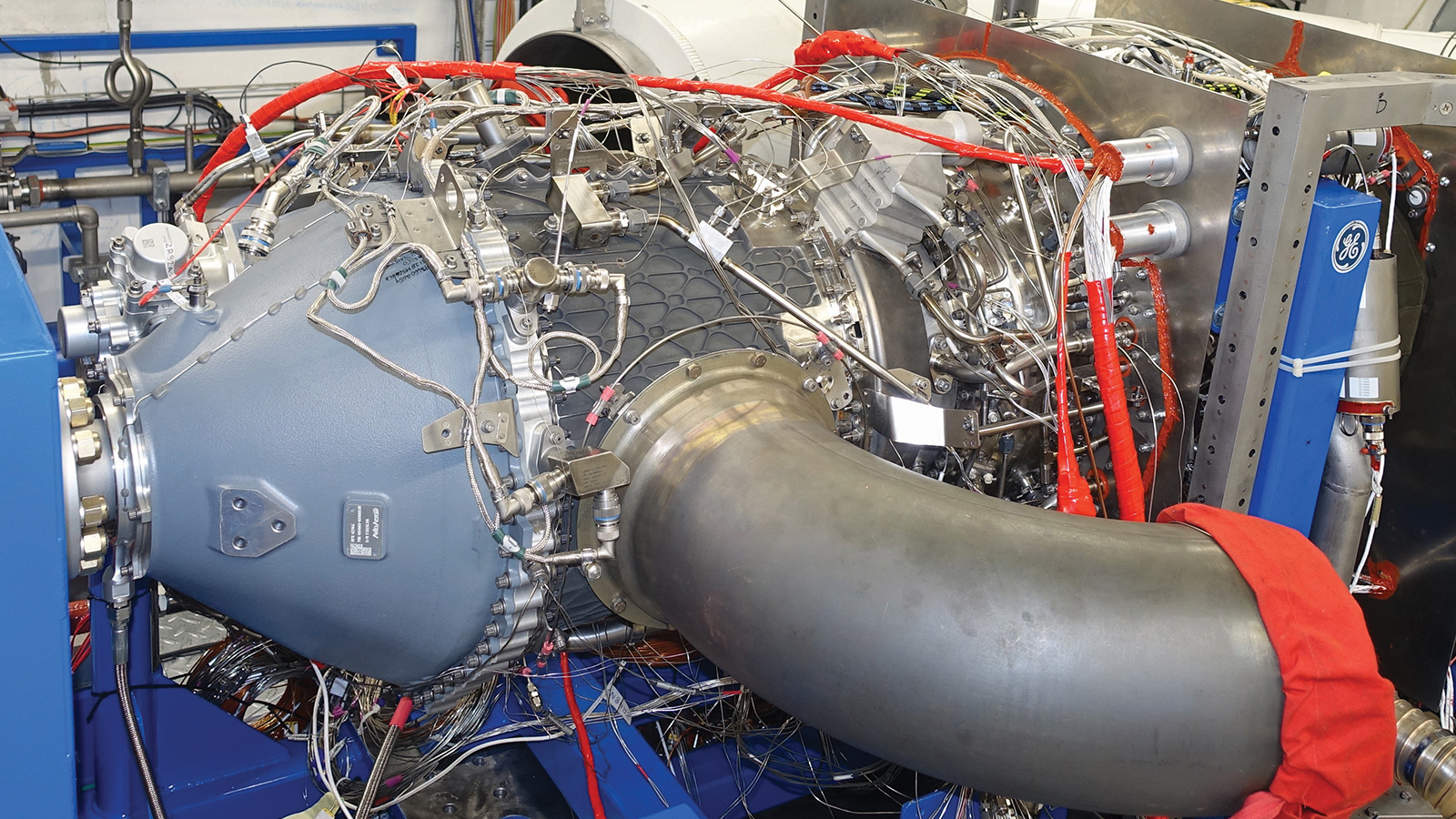Stay Up to Date
Submit your email address to receive the latest industry and Aerospace America news.
The Gas Turbine Engines Technical Committee works to advance the science and technology of aircraft gas turbine engines and engine components.
Engine manufacturers continued a decadelong trend of product introductions, integrating new technologies and manufacturing methods to increase the efficiency and robustness of commercial gas turbine engines.
In April, the GTF, for geared turbofan, PW1900G engine began powering the Embraer E190-E2 for Widerøe Airlines in Norway. The PW1900G is built by Connecticut-based Pratt & Whitney. The engine’s geared fan technology reduces fuel burn by 17 percent over the previous-generation E190, with nitrogen oxide emissions 50 percent lower than regulated and noise 17-20 decibels below standards.
Pratt & Whitney announced in July that the FAA granted 180-minute Extended Range Operations certification to its PW1500G engine, which powers the Airbus A220. As GTF production ramps up, the company has instituted a horizontal assembly line for the family of engines to speed production by up to 50 percent versus traditional engine assembly techniques.
In June, Pratt announced the creation of GatorWorks in Florida, describing it as a rapid prototyping facility to cut cost and time to market by 50 percent over traditional military engine development timelines. The new unit incorporates a mix of cross-functional teams, vertical integration and a short list of suppliers and partners.
In March, GE Aviation of Ohio announced the name of its new turboprop engine, the Catalyst, which will power Textron Aviation’s Cessna Denali. During the engine design, engineers reduced 855 conventionally manufactured parts to 12 additively manufactured components. Additive manufacturing reduces the Catalyst’s weight by 5 percent and contributes 1 percent improvement in specific fuel consumption. The engine ran for the first time in December 2017 at GE Aviation’s facility in Prague, Czech Republic, and a second engine ran in June.
The GE9XTM engine lifted off under the wing of GE Aviation’s 747 flying testbed in Victorville, California, for its first flight test in March. The GE9X will enter service on the long-range, twin-engine Boeing 777X and is designed to deliver a 10 percent improved aircraft fuel burn versus the 777-300ER. Also in March, GE Aviation GEnx engines powered Australia-based Qantas Airways’ first nonstop passenger flight from Perth, Australia, to London, traveling 14,500 kilometers in approximately 17 hours and 20 minutes. The Perth-London flight is the third-longest commercial flight in the world in terms of time.
Rolls-Royce of England showed the Trent XWB-97 engine at the Singapore Airshow in February. The 430,000-newtons-of-thrust engine will exclusively power the Airbus A350-1000. Compared to the 373,650-newtons-of-thrust XWB, the front fan of the XWB-97 will run approximately 6 percent faster, the engine core has been scaled up in size to cope with increased airflow into the compressor, and the combustor and turbines will both run at higher temperatures. The engine also features new materials and coatings for the high-pressure turbine blades as well as an intelligent cooling system to ensure expected performance and efficiency can be delivered at the higher temperatures.
In May, Rolls-Royce announced the launch of the Pearl, a new engine family for business aviation. The engine, developed in Germany and certified in February, will be the sole engine for Bombardier’s Global 5500 and 6500 aircraft. The Pearl 15 will deliver up to 67,279 newtons of thrust, deliver up to 9 percent more thrust during takeoff than the BR700, be 2 decibels quieter, and have a 7 percent improvement in specific fuel consumption. The engine was undergoing flight tests that started in January at Bombardier’s Flight Test Centre in Kansas.
Photo: The second GE Catalyst turboprop engine is installed in a dynamometric test cell at GE Aviation’s facility in Prague, Czech Republic. Credit: GE Aviation
Stay Up to Date
Submit your email address to receive the latest industry and Aerospace America news.




